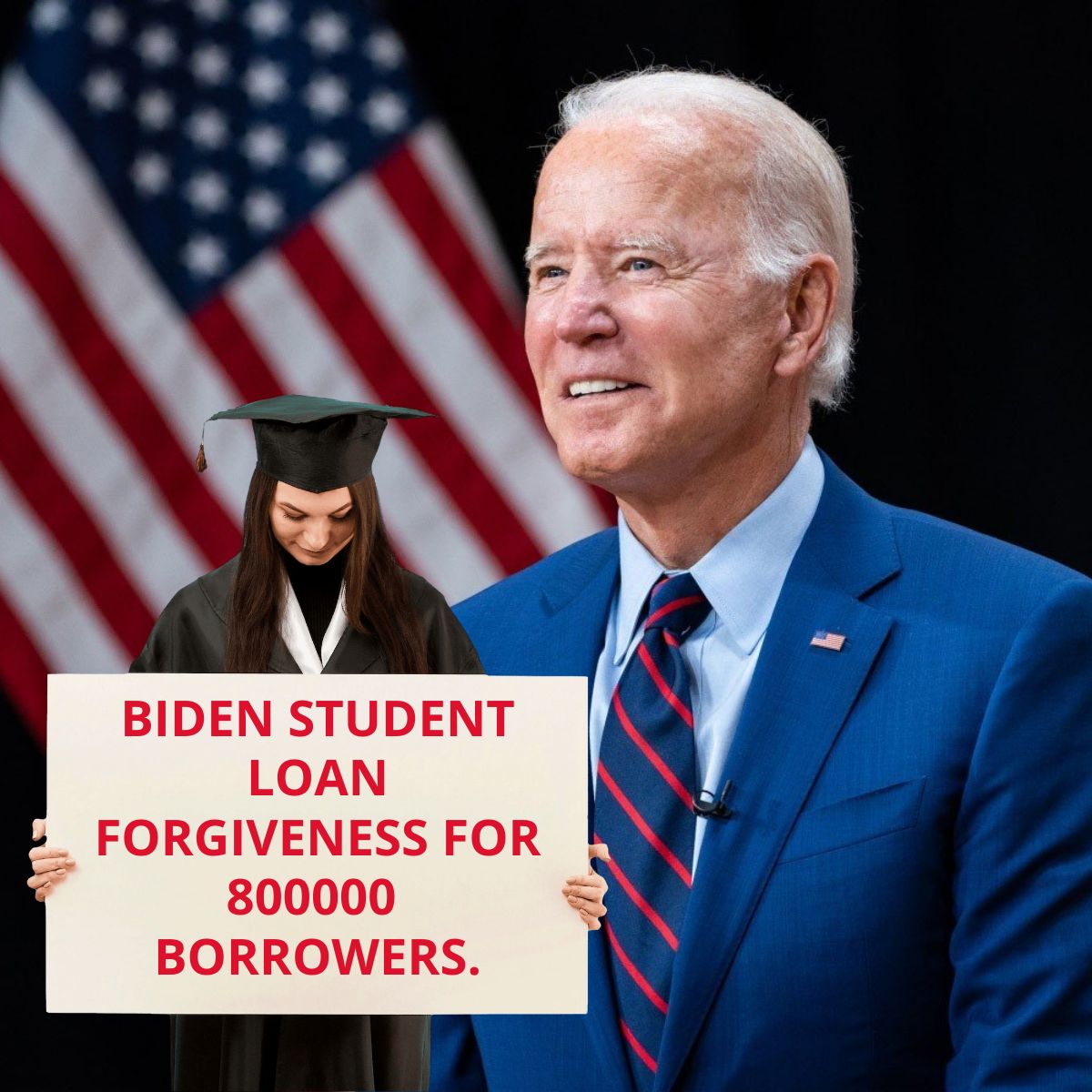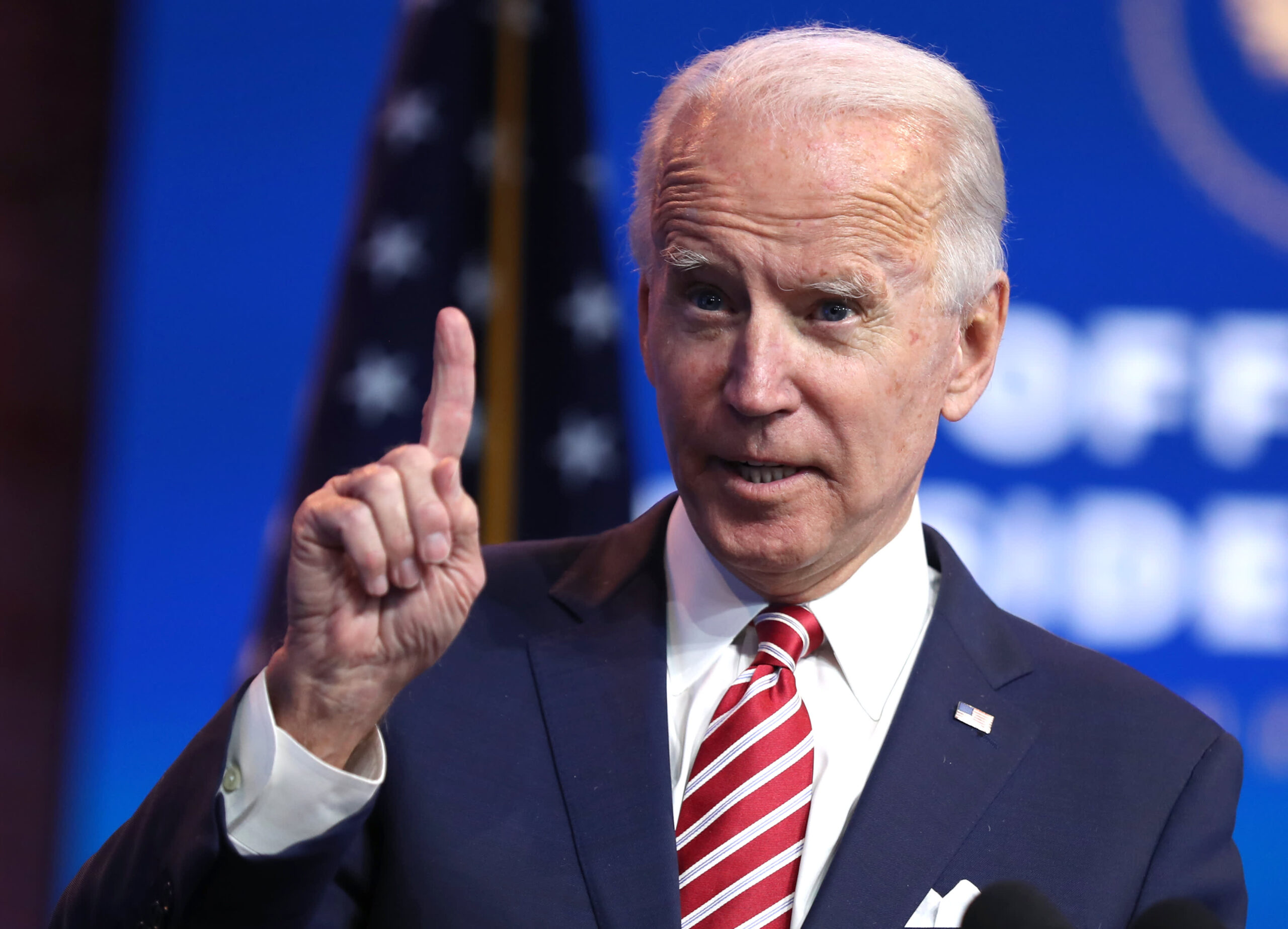Student Loan Forgiveness has been a widely discussed topic, especially in light of the efforts made by President Biden’s administration to address the issue.
In recent news, it has been announced that more than 800,000 borrowers are on the verge of receiving a significant breakthrough in the form of student loan forgiveness.
While the Supreme Court decision may have halted the widespread debt forgiveness proposed by President Biden, these borrowers are about to receive an email from the U.S. Department of Education, informing them that their debts will soon be automatically erased. This update brings hope and relief to numerous individuals burdened by student loans.
The Need for Student Loan Forgiveness
The decision to provide student loan forgiveness stems from a promise made by the Biden administration in response to years of complaints, lawsuits, and an NPR investigation.
The investigation revealed that many long-time borrowers who should have qualified for loan forgiveness under the government’s income-driven repayment plans (IDR) had not received the relief they were entitled to due to mismanagement by the Department of Education and loan servicers.
This update is a step forward in rectifying the systemic issues that have prevented borrowers from accessing the benefits they deserve.
Who Qualifies for Student Loan Forgiveness? Eligibility for biden student loan forgiveness
☝️<<Click the image to redirect to the official website>>☝️
It’s crucial to understand who qualifies for student loan forgiveness under the new update. Borrowers with direct loans or those made through the Federal Family Education Loan (F.F.E.L.) program and held by the Education Department may qualify.
This includes borrowers with Parent PLUS loans. However, eligibility for debt cancellation is subject to meeting certain criteria. Borrowers must have accumulated the equivalent of either 20 or 25 years of qualifying months, depending on their specific circumstances.
Check the prices for Amazing Gaming Mouse >>https://amzn.to/43qH556
For most borrowers, this means being in repayment for 240 or 300 months under an income-driven repayment plan (where payments vary based on a borrower’s income and family size) or a standard repayment plan.
The precise number of qualifying payments varies depending on the borrower’s loan type and the payment plan they are enrolled in.
Understanding Qualifying Payments
- Determining whether one has received extra credit for payments can be a complex process. However, borrowers’ updated payment count includes any month they were in repayment, irrespective of the loan type, repayment plan used, or whether payments were partial or late.
- Additionally, borrowers will receive credit for any period they spent 12 or more consecutive months in forbearance. Those who spent 36 or more cumulative months in forbearance will also be granted credit for any month in forbearance.
- It’s important to note that any month spent in deferment (except for in-school deferment) before 2013, or in economic hardship or military deferment on or after January 1, 2013, will also count towards qualifying payments.
- These situations also apply if they occurred before the consolidation of loans.
Commencement of Debt Cancellation
- The commencement of debt cancellation is immediate. The Education Department has committed to informing borrowers if they have enough payments for cancellation, without requiring any further action on their part. Notifications will be sent out every two months until next year to inform borrowers who have reached the debt elimination threshold. Debt discharges will begin 30 days after the emails are sent, and borrowers’ loan servicers will notify them when the process is completed.
- If borrowers are currently making payments, which are set to resume in October after a three-year payment freeze, those payments will be paused until the debt is eliminated. However, it’s essential for borrowers who wish to opt out for any reason to notify their loan servicer promptly.
Accessing Updated Payment Information
Gathering updated payment information may take some time, and borrowers may not be able to access this information until next year. Loan servicers are currently waiting for the Education Department to update the numbers. Therefore, calling your servicer at this moment is unlikely to provide new information. It’s recommended to stay updated with official announcements from the Education Department regarding the availability of updated payment counts.
A Step Towards Addressing Student Loan Debt
President Biden’s commitment to addressing the issue of student loan debt has been met with both support and criticism. While this latest announcement regarding student loan forgiveness is welcomed by many borrowers, critics argue that the administration is overreaching its authority and setting a precedent for future loan cancellations. However, for individuals burdened by student loans, this update represents a glimmer of hope and relief from the financial strain they have endured.
Books to GROW RICH INSTANTLY >> https://amzn.to/44np20Y
FAQs
Ques: Did the student loan forgiveness go through? A : As per the latest update, student loan forgiveness has not gone through in the traditional sense of widespread debt cancellation. However, certain borrowers have become eligible for debt forgiveness through the U.S. Department of Education’s automatic erasure program. This program aims to rectify the mismanagement of loan forgiveness under the government’s income-driven repayment plans.
Ques: Do you have to make 120 qualifying payments or the equivalent? A: The number of qualifying payments required for student loan forgiveness depends on the specific circumstances and repayment plan. Generally, borrowers must make either 120 qualifying payments or the equivalent of 20 or 25 years of qualifying months, depending on the repayment plan and loan type. It is important to consult with the loan servicer or the U.S. Department of Education for precise information based on individual situations.
Ques: How can I pay off my student loans? A: To pay off student loans, several strategies can be employed:
- a) Make regular payments: Ensure that you make regular monthly payments to reduce the outstanding balance.
- b) Increase monthly payments: If financially feasible, consider increasing the monthly payment amount to expedite loan repayment.
- c) Explore loan forgiveness programs: Research and determine if you qualify for any loan forgiveness programs available based on your occupation, such as the Public Service Loan Forgiveness (PSLF) program.
- d) Refinance or consolidate loans: Evaluate the option of refinancing or consolidating your loans to potentially obtain a lower interest rate or simplify repayment by combining multiple loans into a single payment.
- e) Seek additional income sources: Consider finding ways to increase your income, such as taking on a part-time job or freelancing, to allocate more funds towards loan repayment.
Ques: Whose student loans will be forgiven? A: Under the current student loan forgiveness update, various categories of borrowers may be eligible for debt cancellation. This includes borrowers with direct loans or those made through the Federal Family Education Loan (F.F.E.L.) program and held by the Education Department. It is important to review the specific eligibility criteria and consult with loan servicers or the U.S. Department of Education to determine if your student loans fall within the eligible categories.
Ques: How do I apply for a savings plan? A: If you are referring to a loan repayment plan that offers potential loan forgiveness, such as an income-driven repayment plan (IDR), the application process typically involves the following steps:
- a) Contact your loan servicer: Reach out to your loan servicer to inquire about available repayment plans and express your interest in applying for an IDR plan.
- b) Gather necessary documentation: Prepare the required documentation, such as income verification, family size information, and any other documents specified by the loan servicer or the U.S. Department of Education.
- c) Submit the application: Complete the application form provided by your loan servicer or the U.S. Department of Education accurately and submit it within the specified timeframe.
- d) Await approval: After submitting the application, await notification regarding your eligibility and approval for the chosen repayment plan. It is important to continue making payments as required until the new repayment plan takes effect.
Contact Us ✉ for Advertisement & Sponsorship at
Know More:
The Remarkable Journey of Chandrayaan-3: India’s Ambitious Lunar Mission
Image Creation Credits: https://wepik.com/edit/2b8c8343-867a-4eb3-85e2-186c23fc5afd
https://www.washingtonpost.com/education/2023/07/14/biden-student-loan-forgiveness-income-driven/
https://www.nytimes.com/2023/07/14/your-money/student-loans-forgiveness-biden.html







